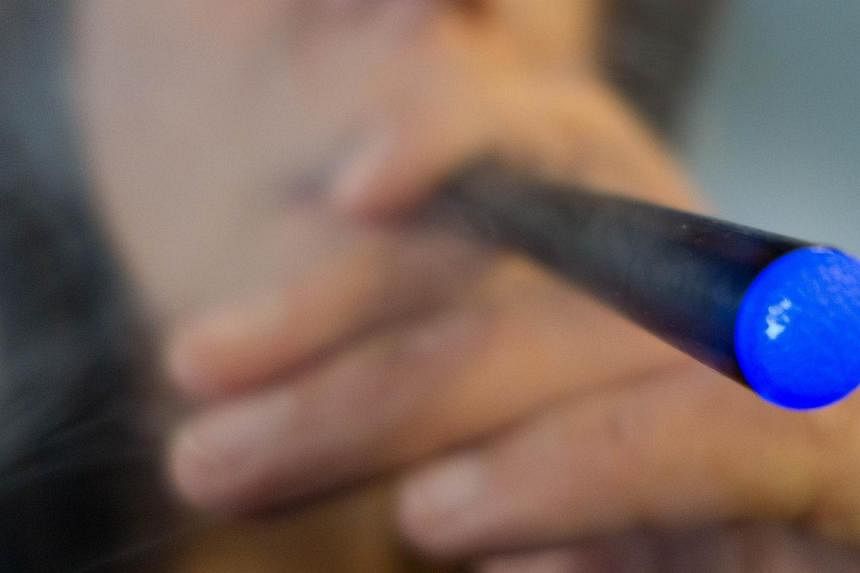CHICAGO (REUTERS) - Electronic cigarettes may be more tempting to non-smoking youths than conventional cigarettes, and once young people have tried e-cigarettes they are more inclined to give regular cigarettes a try, US researchers said on Monday.
A report, released by a team at the US Centres for Disease Control and Prevention, lends evidence to the argument that electronic cigarettes encourage youth smoking.
The study, based on nationally representative youth surveys, found that more than a quarter-million adolescents and teens who had never smoked used an electronic cigarette in 2013, a threefold increase from 2011.
Youths who had tried e-cigarettes were nearly twice as likely to say they would try a conventional cigarette in the next year compared with those who had never tried an e-cigarette, according to the study in the journal Nicotine and Tobacco Research.
E-cigarettes are slim, reusable, metal-tube devices containing nicotine-laced liquids that come in exotic flavors. When users puff, the nicotine is heated and released as a vapor containing no tar, unlike conventional cigarette smoke.
Health experts have raised concerns that the burgeoning US$2 billion (S$2.5 billion) e-cigarette industry, which has been virtually unregulated, would reverse gains in the decades-long effort to curb youth smoking in the United States. Just 15.7 per cent of US teenagers reported smoking in 2013, the lowest rate on record.
In April, the US Food and Drug Administration proposed rules that would ban the sale of e-cigarettes to anyone under 18 but would not restrict flavoured products, online sales or advertising, which public health advocates say attract children.
Earlier this month, attorneys general from 29 states urged the FDA to strengthen those rules to better protect young people from nicotine addiction.
"We are very concerned about nicotine use among our youth, regardless of whether it comes from conventional cigarettes, e-cigarettes or other tobacco products," Dr Tim McAfee, director of CDC's Office on Smoking and Health, said in a statement.
"Not only is nicotine highly addictive, it can harm adolescent brain development."
In the CDC study, researchers analysed data from the 2011, 2012, and 2013 National Youth Tobacco Surveys of students in grades 6-12. They found that more than 263,000 who had never smoked a conventional cigarette used e-cigarettes in 2013, up from 79,000 in 2011.
Among non-smoking youth who had tried electronic cigarettes, 43.9 per cent said they intended to smoke conventional cigarettes within the next year, compared with 21.5 per cent of those who had never used e-cigarettes.
Lorillard leads the US e-cigarette market, while Reynolds American and Altria Group are rolling out their own brands nationwide this summer.
A Wells Fargo analyst report in July projected that US sales of e-cigarettes would outpace conventional ones by 2020.

